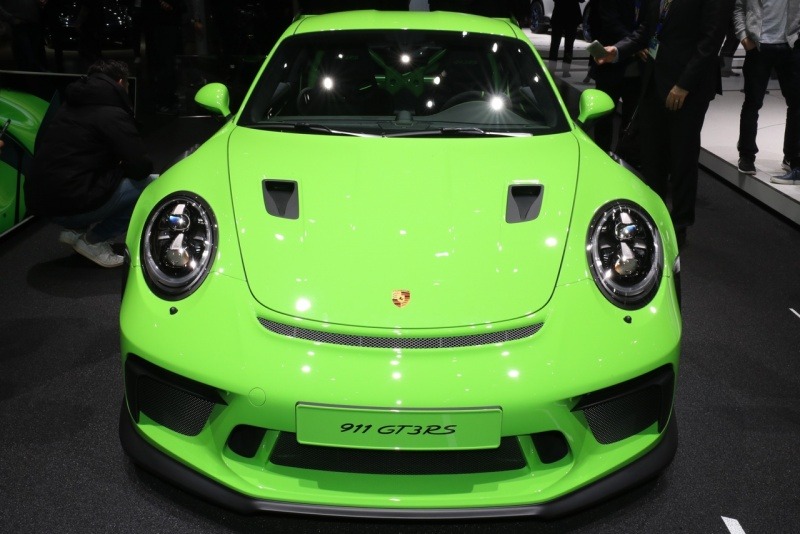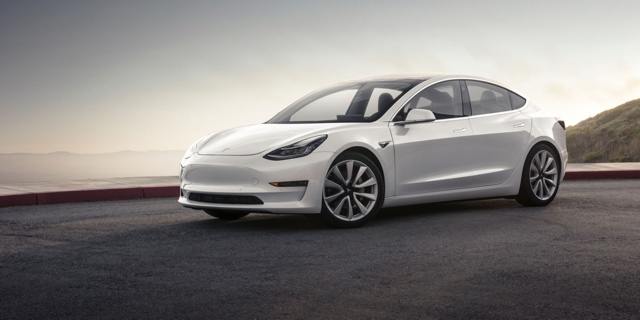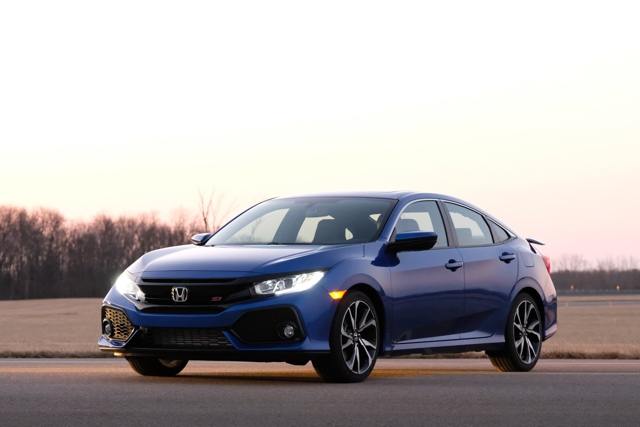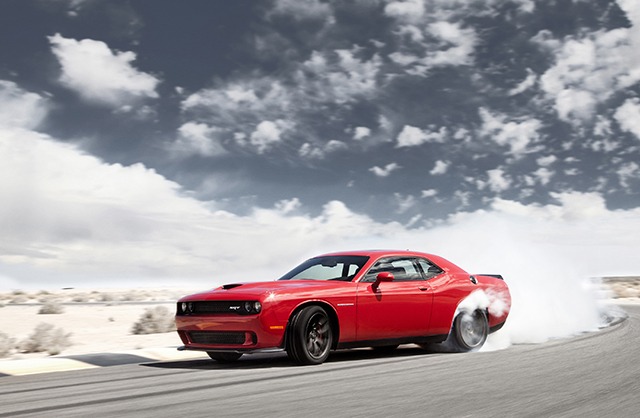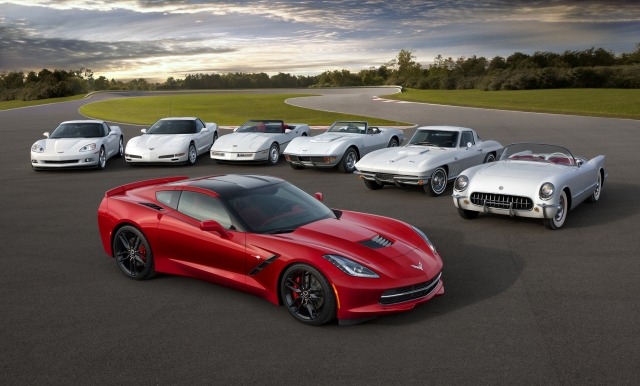Search the Community
Showing results for tags 'Horsepower'.
-

Upcoming 911 Plug-In Hybrid Could Be the Most Powerful 911 Yet
William Maley posted an article in Porsche
The next-generation Porsche 911 will offer a plug-in hybrid variant and comments made the CEO hint it could be the most powerful 911 ever. “The 911 plug-in must be a very strong performing car. It will be the most powerful 911 we’ve ever had; 700bhp might be possible," Porsche CEO Oliver Blume told Autocar. It should be noted that Porsche already has a 911 that produces 700 horsepower, the GT2 RS. To pull this off, the plug-in hybrid needs a powerful electric motor. Luckily, they have one in the Panamera 4 E-Hybrid which produces 134 horsepower. The gas engine would likely be a turbocharged flat-six. Blume says there would be a button that provides "the electric punch". The 911 plug-in would draw on knowledge from the 918 Spyder and Panamera hybrids, but also come with its own set of technologies. The plug-in variant is expected to launch “a couple years” after the new 911. Considering the next-generation 992 will be debuting at the Paris Motor Show later this year, expect to see it either 2020 or 2021. Source: Autocar- 2 comments
-
- 911
- 911 plug-in
-
(and 3 more)
Tagged with:
-
The next-generation Porsche 911 will offer a plug-in hybrid variant and comments made the CEO hint it could be the most powerful 911 ever. “The 911 plug-in must be a very strong performing car. It will be the most powerful 911 we’ve ever had; 700bhp might be possible," Porsche CEO Oliver Blume told Autocar. It should be noted that Porsche already has a 911 that produces 700 horsepower, the GT2 RS. To pull this off, the plug-in hybrid needs a powerful electric motor. Luckily, they have one in the Panamera 4 E-Hybrid which produces 134 horsepower. The gas engine would likely be a turbocharged flat-six. Blume says there would be a button that provides "the electric punch". The 911 plug-in would draw on knowledge from the 918 Spyder and Panamera hybrids, but also come with its own set of technologies. The plug-in variant is expected to launch “a couple years” after the new 911. Considering the next-generation 992 will be debuting at the Paris Motor Show later this year, expect to see it either 2020 or 2021. Source: Autocar View full article
- 2 replies
-
- 911
- 911 plug-in
-
(and 3 more)
Tagged with:
-
When Tesla finally revealed the Model 3 a couple weeks, we learned about a number of items such as max range (220 or 310 if you opt for the larger battery), how fast they hit 60 mph, and what will come standard. What wasn't talked about was how big the battery was and power figures. Thanks to some EPA documents, we have some idea on both. InsideEVs found some preliminary documents dealing with the long-range Model 3 and figured out that has an 80.5-kilowatt-hour battery pack - the document says it is a 230 Ah battery pack with 350 V nominal voltage. We should note that CEO Elon Musk has said previously that the Model 3 could not take anything larger than a 75-kWh battery. But, InsideEVs says Musk could have been referring to useable, not the max capacity of the pack. We also have learned that the long-range Model 3 produces 258 horsepower. Sadly, no torque figure was given in the documents. Source: InsideEVs View full article
-

EPA Document Reveals Tesla Model 3 To Produce 258 Horsepower
William Maley posted an article in Tesla
When Tesla finally revealed the Model 3 a couple weeks, we learned about a number of items such as max range (220 or 310 if you opt for the larger battery), how fast they hit 60 mph, and what will come standard. What wasn't talked about was how big the battery was and power figures. Thanks to some EPA documents, we have some idea on both. InsideEVs found some preliminary documents dealing with the long-range Model 3 and figured out that has an 80.5-kilowatt-hour battery pack - the document says it is a 230 Ah battery pack with 350 V nominal voltage. We should note that CEO Elon Musk has said previously that the Model 3 could not take anything larger than a 75-kWh battery. But, InsideEVs says Musk could have been referring to useable, not the max capacity of the pack. We also have learned that the long-range Model 3 produces 258 horsepower. Sadly, no torque figure was given in the documents. Source: InsideEVs- 3 comments
-
The echo of a sad trombone could be heard when Honda announced that the new Civic Si would only produce 205 horsepower from a turbocharged 1.5L four-cylinder. Fans were hoping for a bit more power and Honda's engineers say there is more power on tap. But there are two key reasons as to why the Japanese automaker did this. The engineers said "you can tune more power into it, but all of that takes away from the durability of the engine," said Rob Keough, senior product planner on the Civic to Automotive News. "Honda likes to build their engines to last hundreds of thousands of miles, so they're working toward that target." The other reason comes down to price. Honda wanted to keep the Si affordable while adding some impressive performance parts such as a limited-slip differential and adaptive suspension. "The Si has always been in the [price] range that it's in. We wanted it to be attainable and affordable, so our target for Si was really to come in at this price point with this performance level," said Keough. For example, if Honda was to use a detuned version of the turbo 2.0L found in the Civic Type R, that would push the price to nearly $30,000. Keough didn't rule out the possibility of there being a variant between the Si and Type R that would offer a bit more power. He also didn't rule out using a detuned Type R motor for this model. "There's maybe other configurations and things that they can do with this motor," said Keough. We have a possible name for this possible model, Civic SiR. Source: Automotive News (Subscription Required) View full article
- 35 replies
-
The echo of a sad trombone could be heard when Honda announced that the new Civic Si would only produce 205 horsepower from a turbocharged 1.5L four-cylinder. Fans were hoping for a bit more power and Honda's engineers say there is more power on tap. But there are two key reasons as to why the Japanese automaker did this. The engineers said "you can tune more power into it, but all of that takes away from the durability of the engine," said Rob Keough, senior product planner on the Civic to Automotive News. "Honda likes to build their engines to last hundreds of thousands of miles, so they're working toward that target." The other reason comes down to price. Honda wanted to keep the Si affordable while adding some impressive performance parts such as a limited-slip differential and adaptive suspension. "The Si has always been in the [price] range that it's in. We wanted it to be attainable and affordable, so our target for Si was really to come in at this price point with this performance level," said Keough. For example, if Honda was to use a detuned version of the turbo 2.0L found in the Civic Type R, that would push the price to nearly $30,000. Keough didn't rule out the possibility of there being a variant between the Si and Type R that would offer a bit more power. He also didn't rule out using a detuned Type R motor for this model. "There's maybe other configurations and things that they can do with this motor," said Keough. We have a possible name for this possible model, Civic SiR. Source: Automotive News (Subscription Required)
- 35 comments
-
One the big mysteries that has been surrounding the 2015 Dodge Challenger SRT Hellcat is how much power does the 6.2L supercharged Hellcat V8 engine make. We've been hearing reports of somewhere 600-plus horsepower when this engine was still a rumor, and Dodge said the engine was capable of producing more than 600 horsepower. Well Dodge has finally answered the question and its a doozy. The 6.2L supercharged Hellcat V8 engine makes 707 horsepower and 650 pound-feet of torque. No that is not a misprint. This is most powerful muscle car on offer. This will be routed to the rear-wheels via a TorqueFlite eight-speed transmission that has been upgraded to handle all of the power. There's more to the Hellcat. Much like the track key Ford used on the Boss 302, Dodge will offer two key fobs – one red, one black. The red key gives you the full 707 horsepower, while the black key restricts that to 500 horsepower. Dodge says pricing for the Hellcat will be coming very soon, and production will begin sometime in the third quarter. Source: Dodge William Maley is a staff writer for Cheers & Gears. He can be reached at [email protected] you can follow him on twitter at @realmudmonster. Press Release is on Page 2 Dodge Challenger SRT Hellcat Is The Most Powerful Muscle Car Ever -- 707 hp! July 1, 2014 , Auburn Hills, Mich. - The all-new 2015 Dodge Challenger SRT, with its supercharged 6.2-liter HEMI Hellcat engine, produces an unprecedented 707 horsepower and 650 lb.-ft. of torque, making it the most powerful Challenger ever, Dodge's most powerful V-8 ever and the most powerful muscle car ever. The Challenger's new 6.2-liter Supercharged Hellcat engine is also the first factory supercharged HEMI, as well as Dodge and SRT's first application of V-8 supercharger technology. For the first time in Chrysler Group history, the all-new 2015 Dodge Challenger SRT with a Hellcat engine comes standard with two key fobs -- red and black. The red key fob is the only key that can unlock the full 707 horsepower and torque potential of the Challenger SRT Hellcat engine; while the black key fob limits the driver to a reduced engine output of 500 horsepower. In addition to the awe-inspiring 707 horsepower of the new Hellcat HEMI, the new 2015 Dodge Challenger SRT Hellcat has been redesigned and totally re-engineered to be the most true-to-form muscle coupe on the market with performance-enhancing technologies inside and out, including the new TorqueFlite eight-speed automatic transmission and an all-new interior inspired by the classic 1971 Challenger. The Dodge and SRT brands now offer the most complete lineup of muscle cars in the market, including the new 2015 Dodge Challenger SXT with its standard powerful and fuel-efficient Pentastar V-6 engine combined with the TorqueFlite eight-speed transmission that delivers 300 horsepower and an estimated 30 miles per gallon; the 2015 Dodge Challenger R/T with the high-torque 5.7-liter HEMI now paired with the TorqueFlite eight-speed or six-speed manual transmission; and the all-new 6.4-liter HEMI Challenger Scat Pack that delivers 485 horsepower and 475 lb.-ft. of torque with the TorqueFlite eight-speed or six-speed manual. The 2015 Dodge Challenger and Challenger SRTs are built at the Brampton, Ontario, Assembly Plant and will start arriving in Dodge dealerships in the third quarter of 2014. View full article
- 12 replies
-
- 2015
- Challenger
-
(and 3 more)
Tagged with:
-

HOLY HORSEPOWER BATMAN! 2015 Dodge Challenger Hellcat Makes 707 Horsepower
William Maley posted an article in Dodge
One the big mysteries that has been surrounding the 2015 Dodge Challenger SRT Hellcat is how much power does the 6.2L supercharged Hellcat V8 engine make. We've been hearing reports of somewhere 600-plus horsepower when this engine was still a rumor, and Dodge said the engine was capable of producing more than 600 horsepower. Well Dodge has finally answered the question and its a doozy. The 6.2L supercharged Hellcat V8 engine makes 707 horsepower and 650 pound-feet of torque. No that is not a misprint. This is most powerful muscle car on offer. This will be routed to the rear-wheels via a TorqueFlite eight-speed transmission that has been upgraded to handle all of the power. There's more to the Hellcat. Much like the track key Ford used on the Boss 302, Dodge will offer two key fobs – one red, one black. The red key gives you the full 707 horsepower, while the black key restricts that to 500 horsepower. Dodge says pricing for the Hellcat will be coming very soon, and production will begin sometime in the third quarter. Source: Dodge William Maley is a staff writer for Cheers & Gears. He can be reached at [email protected] you can follow him on twitter at @realmudmonster. Press Release is on Page 2 Dodge Challenger SRT Hellcat Is The Most Powerful Muscle Car Ever -- 707 hp! July 1, 2014 , Auburn Hills, Mich. - The all-new 2015 Dodge Challenger SRT, with its supercharged 6.2-liter HEMI Hellcat engine, produces an unprecedented 707 horsepower and 650 lb.-ft. of torque, making it the most powerful Challenger ever, Dodge's most powerful V-8 ever and the most powerful muscle car ever. The Challenger's new 6.2-liter Supercharged Hellcat engine is also the first factory supercharged HEMI, as well as Dodge and SRT's first application of V-8 supercharger technology. For the first time in Chrysler Group history, the all-new 2015 Dodge Challenger SRT with a Hellcat engine comes standard with two key fobs -- red and black. The red key fob is the only key that can unlock the full 707 horsepower and torque potential of the Challenger SRT Hellcat engine; while the black key fob limits the driver to a reduced engine output of 500 horsepower. In addition to the awe-inspiring 707 horsepower of the new Hellcat HEMI, the new 2015 Dodge Challenger SRT Hellcat has been redesigned and totally re-engineered to be the most true-to-form muscle coupe on the market with performance-enhancing technologies inside and out, including the new TorqueFlite eight-speed automatic transmission and an all-new interior inspired by the classic 1971 Challenger. The Dodge and SRT brands now offer the most complete lineup of muscle cars in the market, including the new 2015 Dodge Challenger SXT with its standard powerful and fuel-efficient Pentastar V-6 engine combined with the TorqueFlite eight-speed transmission that delivers 300 horsepower and an estimated 30 miles per gallon; the 2015 Dodge Challenger R/T with the high-torque 5.7-liter HEMI now paired with the TorqueFlite eight-speed or six-speed manual transmission; and the all-new 6.4-liter HEMI Challenger Scat Pack that delivers 485 horsepower and 475 lb.-ft. of torque with the TorqueFlite eight-speed or six-speed manual. The 2015 Dodge Challenger and Challenger SRTs are built at the Brampton, Ontario, Assembly Plant and will start arriving in Dodge dealerships in the third quarter of 2014.- 12 comments
-
- 2015
- Challenger
-
(and 3 more)
Tagged with:
-
By William Maley Staff Writer - CheersandGears.com May 28, 2013 When General Motors unveiled the new 2014 Chevrolet Corvette Stingray at the 2013 Detroit Auto Show, the 6.2L LT1 V8 was producing 450 horsepower and 450 pound-feet of torque. However, the 6.2L wasn't certified by the SAE. That has changed today as the 6.2L has received its SAE certification and the numbers are official: 455 horsepower and 460 pound-feet of torque. If you equip the available performance exhaust, those numbers jump to 460 horsepower and 465 pound-feet. “The LT1’s performance complements the Corvette’s low mass with a tremendous feeling of power that builds as the rpm climbs. Drivers will experience more power and acceleration than ever before with the standard engine – in fact, its power and torque surpass many uplevel engines offered by competitors,” said Jordan Lee, Small Block chief engineer. Source: General Motors William Maley is a staff writer for Cheers & Gears. He can be reached at [email protected] you can follow him on twitter at @realmudmonster. Press Release is on Page 2 2014 Corvette Stingray Cranks Out 460 Horsepower SAE certifications confirm new Corvette has most powerful standard engine ever 2013-05-28 DETROIT – The 2014 Corvette Stingray’s all-new LT1 6.2L V-8 engine is SAE-certified at 460 horsepower (343 kW) at 6,000 rpm and 465 lb-ft of torque (630 Nm) at 4,600 rpm, with the available performance exhaust system, Chevrolet announced today. The Stingray is SAE-certified at 455 horsepower (339 kW) and 460 lb-ft (624 Nm) with the standard exhaust system. They are the highest standard power ratings ever for the Corvette, delivered with efficiency that is expected to exceed 26 mpg on the highway. “The 2014 Corvette Stingray’s LT1 engine is a triumph of advanced technology, delivering more power and torque than ever before with greater efficiency,” said Jordan Lee, Small Block chief engineer. “The LT1’s performance complements the Corvette’s low mass with a tremendous feeling of power that builds as the rpm climbs. Drivers will experience more power and acceleration than ever before with the standard engine – in fact, its power and torque surpass many uplevel engines offered by competitors.” At 74 horsepower per liter, the LT1 has greater power density than the C6 Corvette’s LS3 6.2L engine and even the C6 Z06’s racing-derived 7.0L LS7. It also produces comparable torque to the LS7 – up to 4,700 rpm – and its peak torque is within 5 lb-ft of the 7.0L engine. That torque is generated early and sustained across the rpm band, with 316 lb-ft available at only 1,000 rpm and 90 percent of peak torque available from 3,000 rpm to 5,500 rpm – giving the lightweight Corvette Stingray excellent acceleration at all speeds. Chevrolet estimates the Corvette will run from 0 to 60 mph in less than four seconds. The new LT1 engine’s high output, and high power density and efficiency are due to several advanced technologies, including direct injection, Active Fuel Management and continuously variable valve timing, which support an advanced combustion system. Direct injection is a primary contributor to the engine’s combustion efficiency, ensuring a more complete burn of the fuel in the air-fuel mixture. That’s achieved by precisely controlling the mixture motion and fuel injection spray pattern. Direct injection also keeps the combustion chamber cooler, which allows for a higher compression ratio. Emissions are also reduced, particularly cold-start hydrocarbon emissions, which are cut by about 25 percent. Active Fuel Management, or cylinder deactivation, is a first-ever application on Corvette. It helps save fuel by imperceptibly shutting down half of the engine’s cylinders in light-load driving. Continuously variable valve timing is refined to support the LT1 AFM and direct injection systems to further optimize performance, efficiency and emissions. These technologies support the all-new, advanced combustion system, which incorporates a new cylinder-head design and a new, sculpted piston design that is an integral contributor to the high-compression, mixture motion parameters enabled by direct injection. Additional engine features include: Advanced oiling system with oil-spray piston cooling and available dry-sump oiling Engine-mounted, camshaft-driven fuel pump to support the direct injection system Intake manifold with “runners in a box” design that allows for high-efficiency airflow packaged beneath the Corvette’s low hood line High-flow, four-into-one exhaust manifolds based on the design of the LS7 engine. Small Block legacy The 2014 Corvette Stingray’s LT1 engine is the fifth generation of the Small Block engine family, which debuted in the Corvette in 1955. It displaced 4.3L (265 cubic inches) and was rated at 195 horsepower, drawing air and fuel through a four-barrel carburetor. Five years later, Small Block power helped Corvette secure its first victory at the 24 Hours of Le Mans. In 2012, the Small Block-powered Corvette Racing C6.R beat Ferrari, BMW and Porsche to sweep the drivers’, team, and manufacturer championships in production-based American Le Mans Series GT class. These championships make Corvette Racing the most successful team in ALMS history, with a total of 77 class wins, eight drivers’ championships, and nine manufacturer and team championships since 2001. The 2014 Corvette Stingray coupe goes on sale this fall, with a convertible following by the end of the year – each sharing an all-new aluminum frame structure and enhanced chassis, as well as completely new exterior and interior designs. View full article
- 7 replies
-
- 2014
- 6.2L LT1 V8
-
(and 4 more)
Tagged with:
-

2014 Chevrolet Corvette Stingray Gets Its SAE Certification
William Maley posted an article in Chevrolet
By William Maley Staff Writer - CheersandGears.com May 28, 2013 When General Motors unveiled the new 2014 Chevrolet Corvette Stingray at the 2013 Detroit Auto Show, the 6.2L LT1 V8 was producing 450 horsepower and 450 pound-feet of torque. However, the 6.2L wasn't certified by the SAE. That has changed today as the 6.2L has received its SAE certification and the numbers are official: 455 horsepower and 460 pound-feet of torque. If you equip the available performance exhaust, those numbers jump to 460 horsepower and 465 pound-feet. “The LT1’s performance complements the Corvette’s low mass with a tremendous feeling of power that builds as the rpm climbs. Drivers will experience more power and acceleration than ever before with the standard engine – in fact, its power and torque surpass many uplevel engines offered by competitors,” said Jordan Lee, Small Block chief engineer. Source: General Motors William Maley is a staff writer for Cheers & Gears. He can be reached at [email protected] you can follow him on twitter at @realmudmonster. Press Release is on Page 2 2014 Corvette Stingray Cranks Out 460 Horsepower SAE certifications confirm new Corvette has most powerful standard engine ever 2013-05-28 DETROIT – The 2014 Corvette Stingray’s all-new LT1 6.2L V-8 engine is SAE-certified at 460 horsepower (343 kW) at 6,000 rpm and 465 lb-ft of torque (630 Nm) at 4,600 rpm, with the available performance exhaust system, Chevrolet announced today. The Stingray is SAE-certified at 455 horsepower (339 kW) and 460 lb-ft (624 Nm) with the standard exhaust system. They are the highest standard power ratings ever for the Corvette, delivered with efficiency that is expected to exceed 26 mpg on the highway. “The 2014 Corvette Stingray’s LT1 engine is a triumph of advanced technology, delivering more power and torque than ever before with greater efficiency,” said Jordan Lee, Small Block chief engineer. “The LT1’s performance complements the Corvette’s low mass with a tremendous feeling of power that builds as the rpm climbs. Drivers will experience more power and acceleration than ever before with the standard engine – in fact, its power and torque surpass many uplevel engines offered by competitors.” At 74 horsepower per liter, the LT1 has greater power density than the C6 Corvette’s LS3 6.2L engine and even the C6 Z06’s racing-derived 7.0L LS7. It also produces comparable torque to the LS7 – up to 4,700 rpm – and its peak torque is within 5 lb-ft of the 7.0L engine. That torque is generated early and sustained across the rpm band, with 316 lb-ft available at only 1,000 rpm and 90 percent of peak torque available from 3,000 rpm to 5,500 rpm – giving the lightweight Corvette Stingray excellent acceleration at all speeds. Chevrolet estimates the Corvette will run from 0 to 60 mph in less than four seconds. The new LT1 engine’s high output, and high power density and efficiency are due to several advanced technologies, including direct injection, Active Fuel Management and continuously variable valve timing, which support an advanced combustion system. Direct injection is a primary contributor to the engine’s combustion efficiency, ensuring a more complete burn of the fuel in the air-fuel mixture. That’s achieved by precisely controlling the mixture motion and fuel injection spray pattern. Direct injection also keeps the combustion chamber cooler, which allows for a higher compression ratio. Emissions are also reduced, particularly cold-start hydrocarbon emissions, which are cut by about 25 percent. Active Fuel Management, or cylinder deactivation, is a first-ever application on Corvette. It helps save fuel by imperceptibly shutting down half of the engine’s cylinders in light-load driving. Continuously variable valve timing is refined to support the LT1 AFM and direct injection systems to further optimize performance, efficiency and emissions. These technologies support the all-new, advanced combustion system, which incorporates a new cylinder-head design and a new, sculpted piston design that is an integral contributor to the high-compression, mixture motion parameters enabled by direct injection. Additional engine features include: Advanced oiling system with oil-spray piston cooling and available dry-sump oiling Engine-mounted, camshaft-driven fuel pump to support the direct injection system Intake manifold with “runners in a box” design that allows for high-efficiency airflow packaged beneath the Corvette’s low hood line High-flow, four-into-one exhaust manifolds based on the design of the LS7 engine. Small Block legacy The 2014 Corvette Stingray’s LT1 engine is the fifth generation of the Small Block engine family, which debuted in the Corvette in 1955. It displaced 4.3L (265 cubic inches) and was rated at 195 horsepower, drawing air and fuel through a four-barrel carburetor. Five years later, Small Block power helped Corvette secure its first victory at the 24 Hours of Le Mans. In 2012, the Small Block-powered Corvette Racing C6.R beat Ferrari, BMW and Porsche to sweep the drivers’, team, and manufacturer championships in production-based American Le Mans Series GT class. These championships make Corvette Racing the most successful team in ALMS history, with a total of 77 class wins, eight drivers’ championships, and nine manufacturer and team championships since 2001. The 2014 Corvette Stingray coupe goes on sale this fall, with a convertible following by the end of the year – each sharing an all-new aluminum frame structure and enhanced chassis, as well as completely new exterior and interior designs.- 7 comments
-
- 2014
- 6.2L LT1 V8
-
(and 4 more)
Tagged with:


